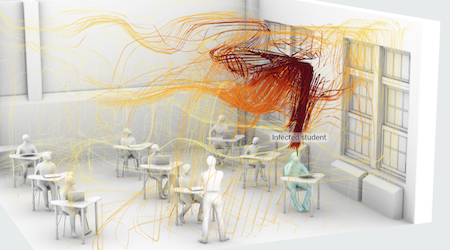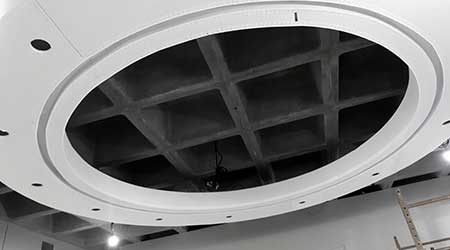
Stunning Visualization Shows Importance of Ventilation in Classrooms
March 19, 2021
As the national conversation about reopening schools continues, and strong feelings both for and against intensify, it seems everyone is now an expert on computational fluid dynamics, air changes per hour, MERV rating, and many other strategies previously only the purview of the facilities office. That’s a good thing, as it shines a spotlight on facility management and its importance for creating safe and healthy spaces.
While the Centers for Disease Control is urging schools to open as quickly as possible, it’s also reporting that only 4 percent of school children live in counties where coronavirus spread is low enough to justify full in-person instruction.
In addition to coronavirus levels still not being adequately under control, another of the biggest problems is that many school buildings across the country have aging HVAC systems, poor ventilation, and lack of operable windows. A stunning visualization created by the New York Times shows how ventilation in classrooms can help reduce the spread of airborne pathogens. But more frighteningly, the visualization shows how lack of ventilation or operable windows, even with social distancing and mask wearing, leads to an extremely dangerous and potentially contagious situation for anyone in that classroom if even one person in the classroom is infected.
The Harvard Healthy Buildings program recommends four to six air changes per hour at minimum in classrooms. This guide can help facility managers determine if there is adequate airflow in their classrooms.
This post was submitted by Greg Zimmerman, editor, Building Operating Management and FacilitiesNet.com.
Next
Read next on FacilitiesNet












